Sustainable vs. Unsustainable Roofing- Your Options Explained
June , 2023 | 7 min. read
By Kevin Mills
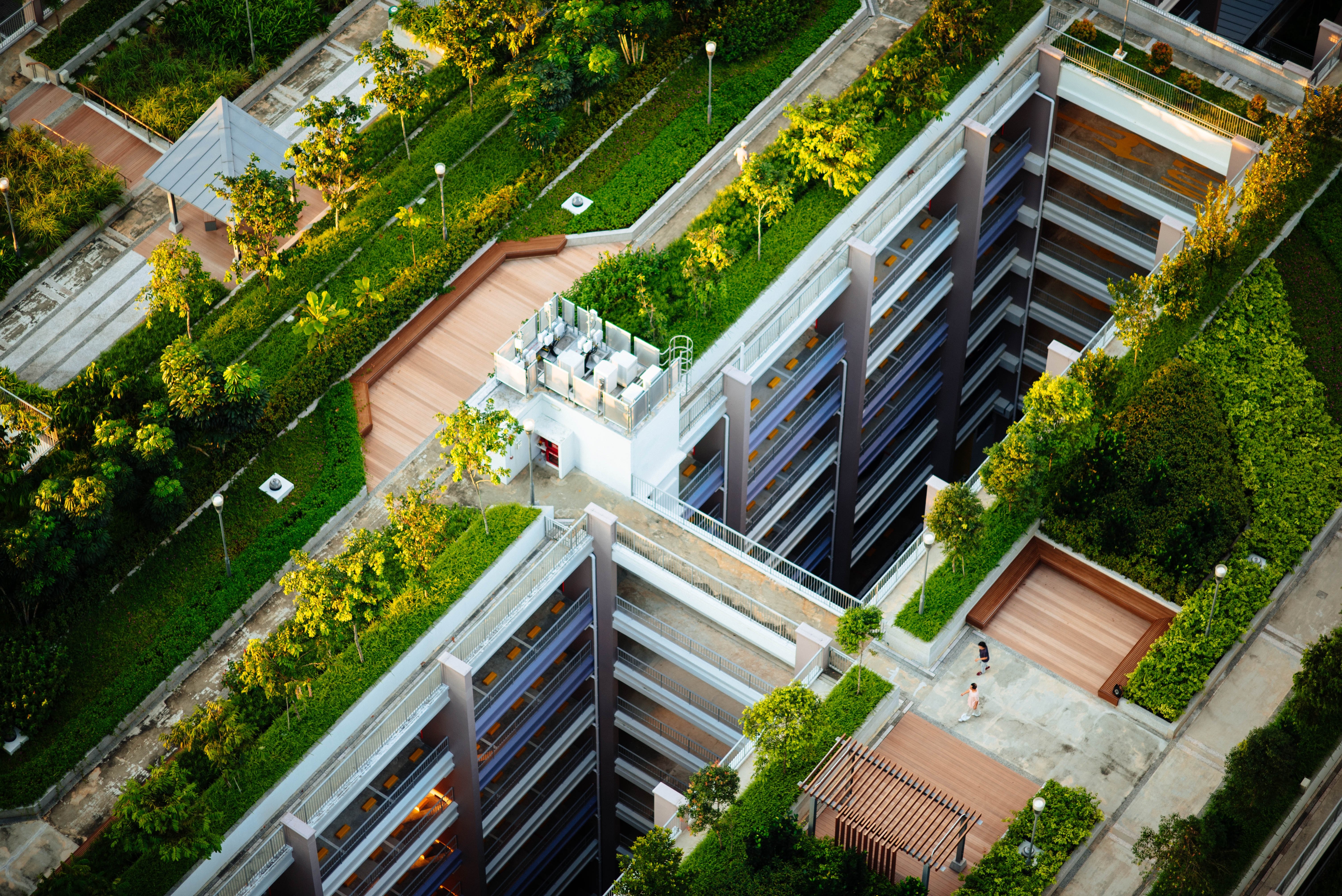
Roofing plays a crucial role in our homes, protecting us from the elements and providing shelter. As environmental concerns continue to grow, roofing material options become increasingly essential! Sustainable roofing choices offer solutions that prioritize eco-friendliness, energy efficiency, and long-term environmental impact. On the other hand, non-sustainable roofing options may fall short in ecological efficiency due to their production methods, materials used, or limited lifespan. However, they're still common and show no signs of slowing down.
RoofCrafters has installed roofing systems for nearly thirty years, and we know all too well that sustainability is becoming more of a concern for homeowners!
In this article, we'll explore the world of sustainable and unsustainable roofing options, shedding light on the benefits and drawbacks of each. By understanding their differences, you can make more informed choices that align with your environmental values and contribute to a greener future. Let's begin!
Sustainable Roofing Options
Regarding environmental consciousness, you may be surprised that there are more "green" roof options than you thought. There are several sustainable roof types available to home and business owners, including:
Metal Roofing: Metal roofs, typically made from recycled materials such as aluminum or steel, are durable, long-lasting, and recyclable. They reflect sunlight, reducing heat absorption and energy consumption for cooling. Metal roofs can also be installed over existing roofs, reducing waste generated during the replacement process.
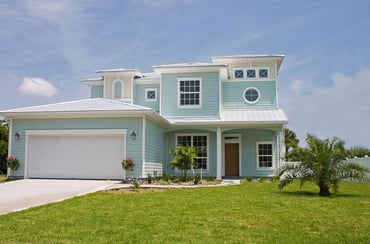
Clay or Concrete Tiles: Clay or concrete tiles are durable, non-toxic, and have a long lifespan. They provide excellent insulation, reducing energy needs for heating and cooling. These tiles can be made from natural materials and are also recyclable. However, their weight may require additional structural support from your home.
Green Roofs: Green roofs, or living roofs, involve the installation of vegetation and plants on the roof surface! They provide numerous environmental benefits, such as improving air quality, reducing stormwater runoff, and increasing insulation. Green roofs can also mitigate the urban heat island effect and provide a habitat for birds and insects. They require specialized design and maintenance to ensure proper drainage and plant health.
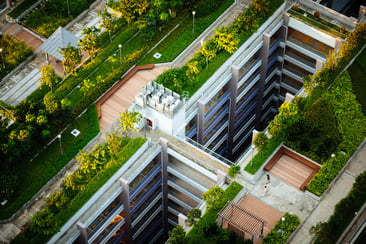
Solar Roofing: Solar roofing integrates photovoltaic (PV) panels into the roofing system, allowing clean, renewable energy generation. Solar shingles or tiles can be seamlessly integrated into the roof, providing an aesthetically pleasing and energy-efficient solution. Solar roofing reduces dependence on grid electricity and lowers greenhouse gas emissions.
Recycled Shingles: Some roofing manufacturers produce shingles using recycled materials, such as plastic, rubber, or wood fibers. These shingles offer durability and can help reduce waste. They often mimic the appearance of traditional roofing materials while providing sustainable alternatives.
Sustainable Roof Coatings: Applying reflective roof coatings to existing roofs can help reduce energy consumption by reflecting sunlight and reducing heat absorption. These coatings can extend the lifespan of the roof and lower cooling costs.
When considering sustainable roofing options, assessing factors such as energy efficiency, material sourcing, recyclability, durability, and overall environmental impact is essential. Consulting with roofing professionals and considering local regulations and climate conditions can help you choose the most suitable sustainable roofing solution for your specific needs.
Non-sustainable Roofing Options
While sustainable roofing options prioritize the environment, non-sustainable options remain! Though common, they don't serve the environment as well as the types we previously mentioned. Here are a few examples:
- Asphalt Shingles: While asphalt shingles are widely used for their affordability and ease of installation, they aren't considered a highly sustainable option. They're made from petroleum-based materials and have a shorter lifespan than some other roofing materials. Additionally, their production and disposal can contribute to environmental pollution.
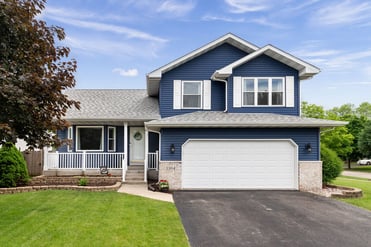
- PVC (Polyvinyl Chloride) Roofing: PVC roofing membranes are durable and weather resistant, making them popular for commercial and industrial buildings. However, the production and disposal of PVC involves the use of harmful chemicals. PVC is not considered an environmentally friendly option due to its environmental impact throughout its life cycle.
- TPO (Thermoplastic Olefin) Roofing: TPO is another commonly used roofing material, especially for commercial buildings. It's a blend of rubber and plastic polymers. While TPO roofing offers good energy efficiency and reflectivity, it's not as durable as other roofing options and can be prone to premature degradation. The production and disposal of TPO roofing may also negatively impact the environment.
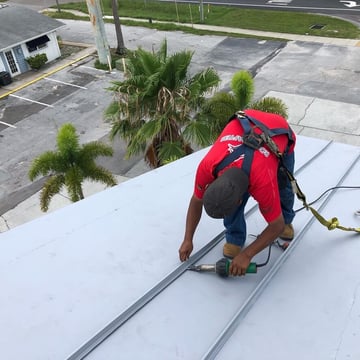
- Traditional Built-Up Roofing (BUR): Built-Up Roofing systems consist of asphalt, felt, and gravel layers. While they have been used for many years, the manufacturing process involves using petroleum-based products, and the installation can be labor-intensive. BUR systems are not as energy-efficient or environmentally friendly as some of the newer roofing options available.
It's important to note that while these roofing options may not be considered highly sustainable, fortunately, the industry has made efforts to improve its environmental performance. For example, manufacturers are developing more sustainable versions of asphalt shingles with recycled content, or PVC roofing membranes with reduced environmental impact.
What's the Difference Between Sustainable and Non-sustainable Roofing?
The difference between sustainable and non-sustainable roofing lies in their environmental impact, energy efficiency, durability, and long-term sustainability. Here are some key distinctions:
Environmental Impact: Sustainable roofing options prioritize minimizing environmental harm. They often use recycled or renewable materials, reduce waste generation, and have lower carbon footprints. Non-sustainable roofing options, on the other hand, may involve using materials derived from non-renewable resources or having high energy consumption levels during production. They can contribute to pollution and waste accumulation.
Energy Efficiency: Sustainable roofing options are designed to enhance energy efficiency. They may have reflective surfaces that reduce heat absorption, insulation properties that minimize temperature fluctuations, or integrate renewable energy technologies like solar panels. Non-sustainable roofing options may lack such energy-efficient features, leading to increased energy consumption for heating, cooling, and lighting.
.jpg?width=306&height=204&name=sigmund-aI4RJ--Mw4I-unsplash%20(1).jpg)
Durability and Longevity: Sustainable roofing options are often built to last, requiring fewer replacements over time. They are designed to withstand weather conditions, resist damage, and have longer lifespans. Non-sustainable roofing options may be less durable, prone to wear and tear, and require more frequent replacements, leading to increased waste generation and resource consumption.
Material Sourcing: Sustainable roofing options prioritize the use of materials that are responsibly sourced and have a minimal environmental impact. This includes utilizing recycled materials, renewable resources, or materials from sustainable forestry practices. Non-sustainable roofing options may rely on materials derived from non-renewable sources or contribute to deforestation and habitat destruction.
Maintenance and Waste: Sustainable roofing options often require minimal maintenance and have reduced waste generation. They may have warranties or be designed for easy repairs. Non-sustainable roofing options may require frequent repairs or replacements, leading to increased waste disposal and environmental impact.
Are Sustainable Roofing Options Right for Me?
While non-sustainable roofing materials may offer initial affordability and convenience, their environmental impact, resource depletion, and contribution to climate change are negatives. On the other hand, sustainable roofing solutions mitigate these environmental concerns and provide numerous benefits such as energy efficiency, reduced carbon footprint, improved indoor air quality, and potential cost savings in the long run. What do you think?
If you have any concerns or questions regarding your roof or a potential new one, RoofCrafters is ready to assist you. When you're ready, visit our contact page to connect with one of our caring representatives. We're here for you every step of the way!
My name is Kevin Mills, and I am the lead estimator for RoofCrafters’ Tampa division. I’m originally from Michigan, and I enjoy hunting, fishing, and spending any free time outdoors. What I’m most passionate about, though, is helping business owners and homeowners alike achieve their roofing goals, all while providing a seamless customer journey.




